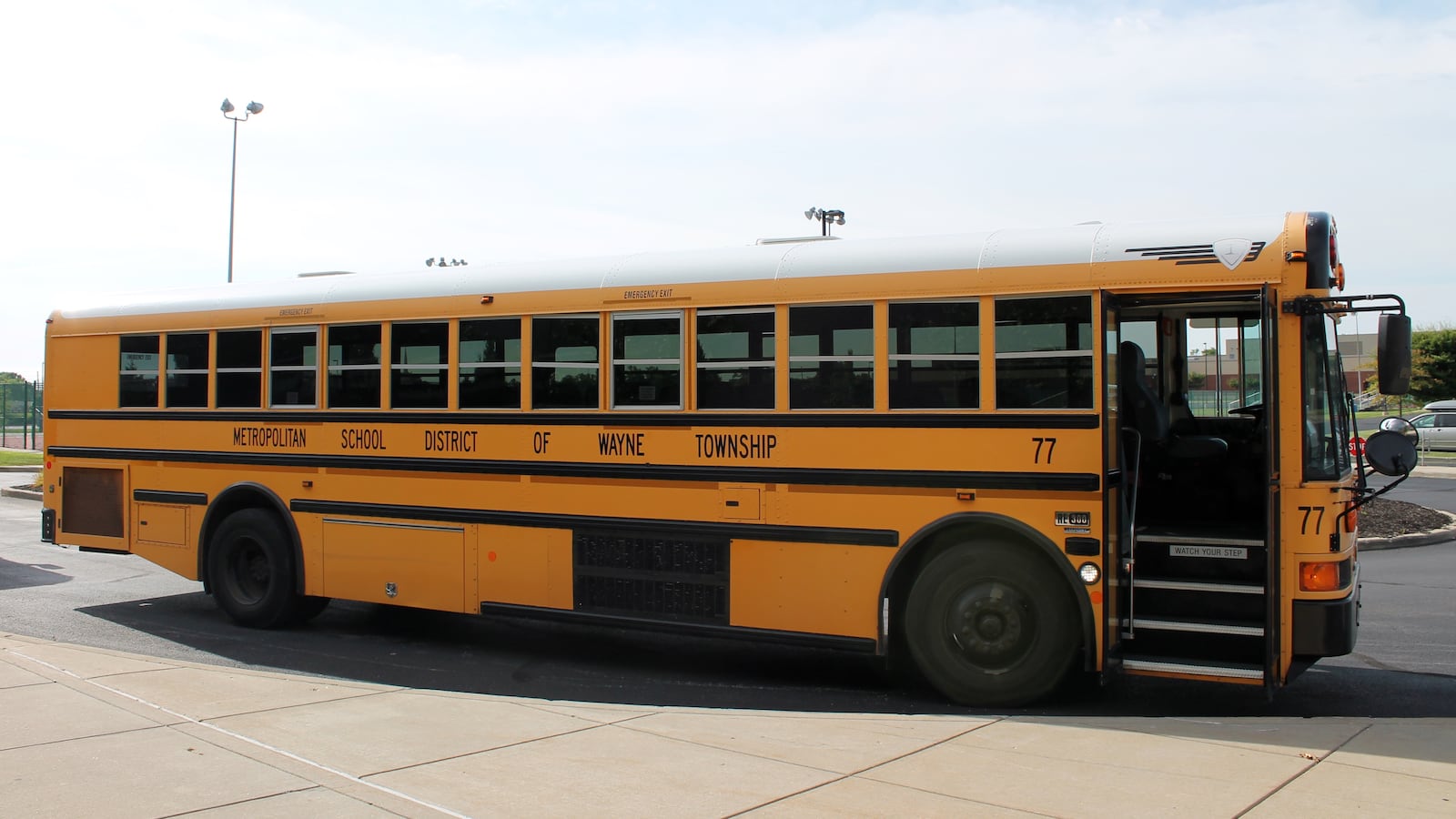In a crisp, blue button-down shirt and tie, recent college graduate Nathaniel Deshazer eagerly watched out the window of a yellow school bus as it rolled passed BBQ joints, churches and homes throughout Indianapolis’ Wayne Township.
Next week, Deshazer will stand in front of 10th and 12th grade students at Ben Davis High School. This week, he and 108 other new teachers in the westside district got a tour of where their students live.
“I will draw your attention to what’s outside your window so you can truly understand the community,” said Shenia Suggs, assistant superintendent for human resources of the Metropolitan School District of Wayne Township, as she directed the bus on a tour of the township.
“It’s a very eclectic, diverse community,” Suggs said.
Deshazer comes from Anderson, a mostly middle-class city an hour north of Indianapolis whose majority white population bears little resemblance to Wayne’s racially-mixed neighborhoods.
He had “no idea” what the community where he’ll be working looked like before the tour, he said. And, as he gets ready to meet his students, he hopes he’ll be able to connect with the kids.
“My strategy is just be real with them, ask them where they come from and genuinely care,” he said.
But as the bus tour rolled by the district’s schools and through its neighborhoods, Deshanzer said he hopes seeing how his students live will help him better understand them.
District administrators on each bus explained the significance of certain areas of town, the stories behind the names of Gasoline Alley or Garden City Elementary School, and answered questions posed by the new teachers.
“Seeing where the students live, the areas and homes in Wayne gives you better understanding of your students,” said Sheila Pritchett, who is new to Wayne Township after teaching in IPS for five years. “Now I have a beforehand snapshot of my students.”
Wayne Township has been giving these tours as part of new teacher orientation since the 1980s, Suggs said.
“It was one of those things that grew out of desegregation,” Suggs said. “And its value has outlasted that.”
Wayne Township was one of the Indianapolis townships that had been largely white when a federal judge ordered the city to implement a busing program to integrate schools.
Faced with a sudden infusion of new students from a different neighborhood, the district began giving bus tours to teachers as a way to introduce its mostly white educators to the African-American students they would be now teaching.
Early bus tours took teachers to Indianapolis’ Haughville neighborhood where the new students lived so they could get a sense of where their students were coming from.
This year, the tours are different. The desegregation busing program ended earlier this year so the bus tour stays closer to Wayne Township, but Wayne has changed remarkably in the years since diversity had to be bussed in.
While just 10 percent of Wayne Townships students had been black when busing began in 1981, today’s student demographics are more diverse — 31 percent black, 26 percent Hispanic and 36 percent white.
The income levels of families also varies widely, evident in the homes ranging from old trailer parks to new, multi-story homes built near a golf course seen on the tour.
“Not many of our teachers live in the district,” Suggs said. “This is really their introduction to the community they serve….we want them to have that information in order to make connections with their students.”
The conversation about how teachers can better relate to their students, especially when racial or cultural differences divide them, is going on in school districts across the nation. The annual bus tour is one of the ways Wayne attempts to cross that divide.
As cultural competency and equity trainings that teach educators how to overcome barriers between them and their students become more popular, there are some critics of the bus tours. One of them is Pat Payne, who was national pioneer creating what is now called the Office of Racial Equity at Indianapolis Public Schools, which provides training to help teachers better serve students from diverse backgrounds.
Payne spoke highly of the work of Suggs and others at Wayne Township. School districts that operate bus tours, she said, should be sure to pair them with deeper training about the local history.
“Districts want to bus teachers around neighborhoods, but you cannot do that without knowing the history and what came before the blight in those communities,” she said.
Community members who lived through the history of the area can give new teachers an better idea of why neighborhoods look the way they do, Payne said, and encourage them to have the same expectations of all kids no matter what part of town they come from.
“We need people to have high expectations,” Payne said.

